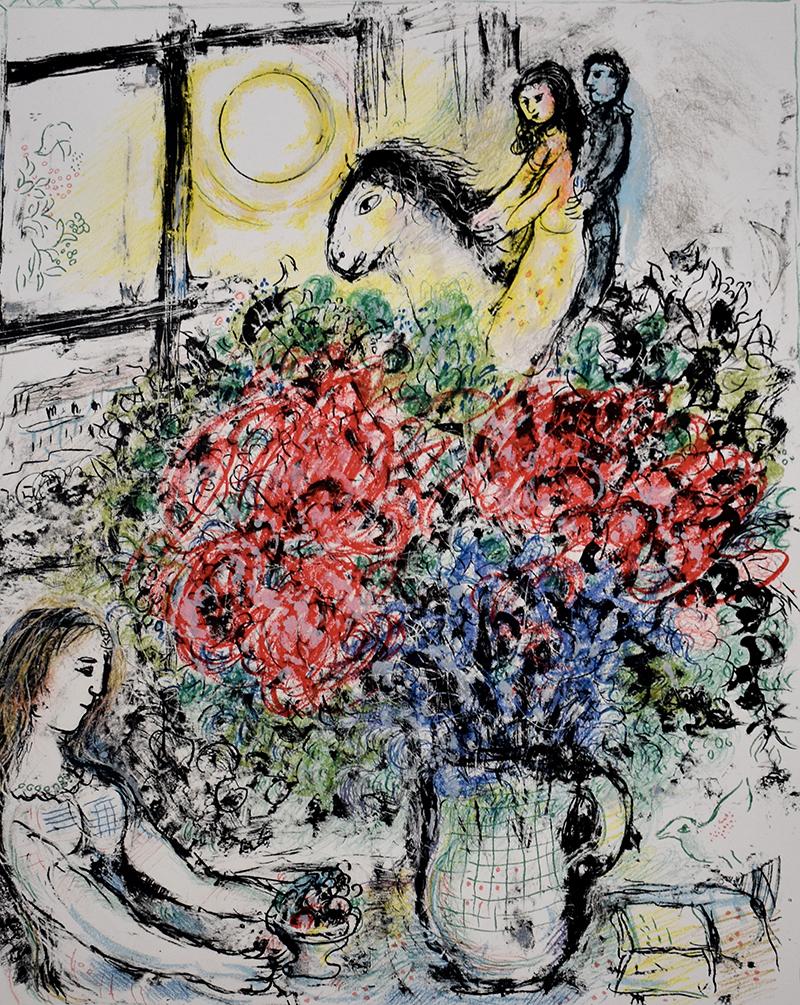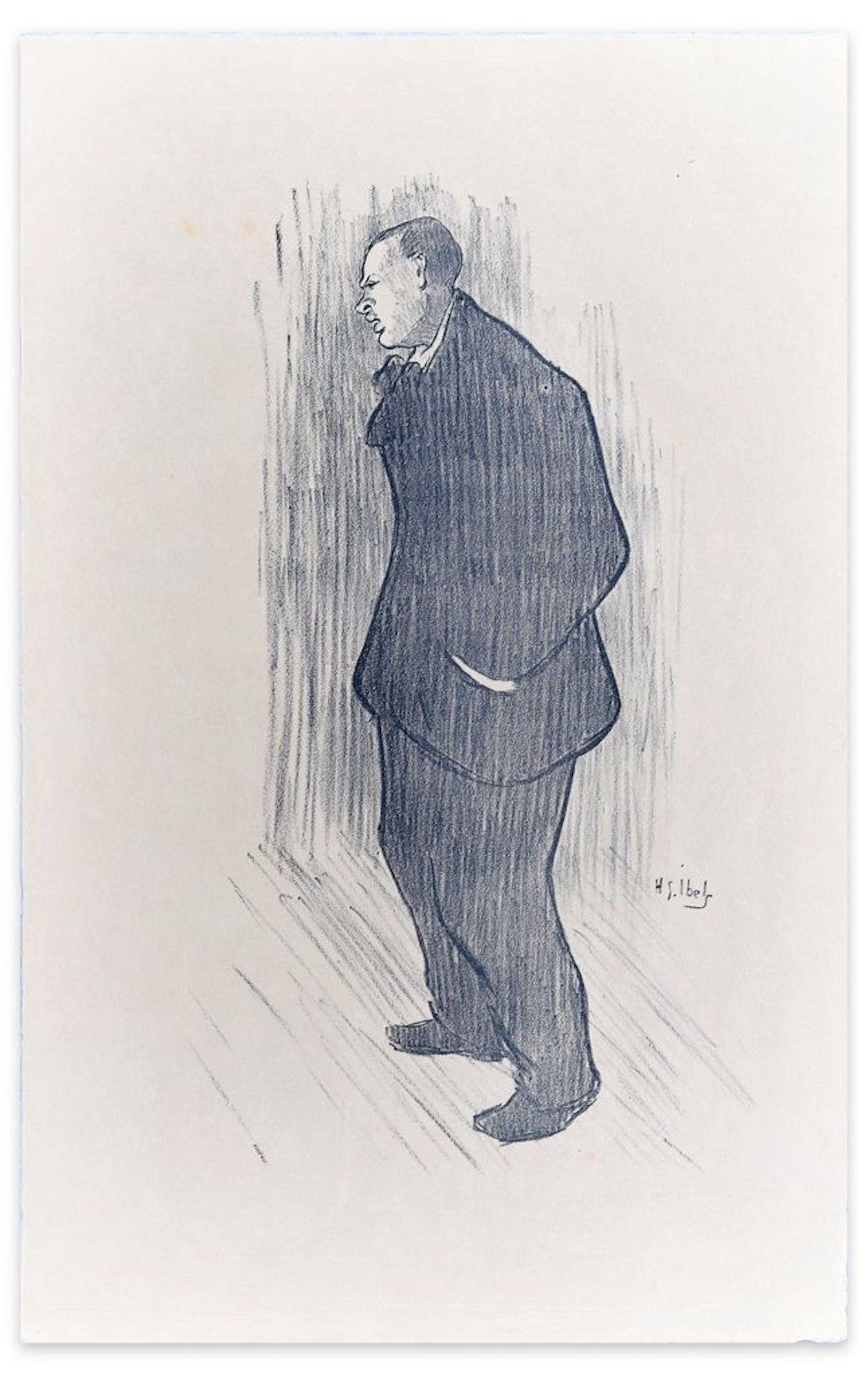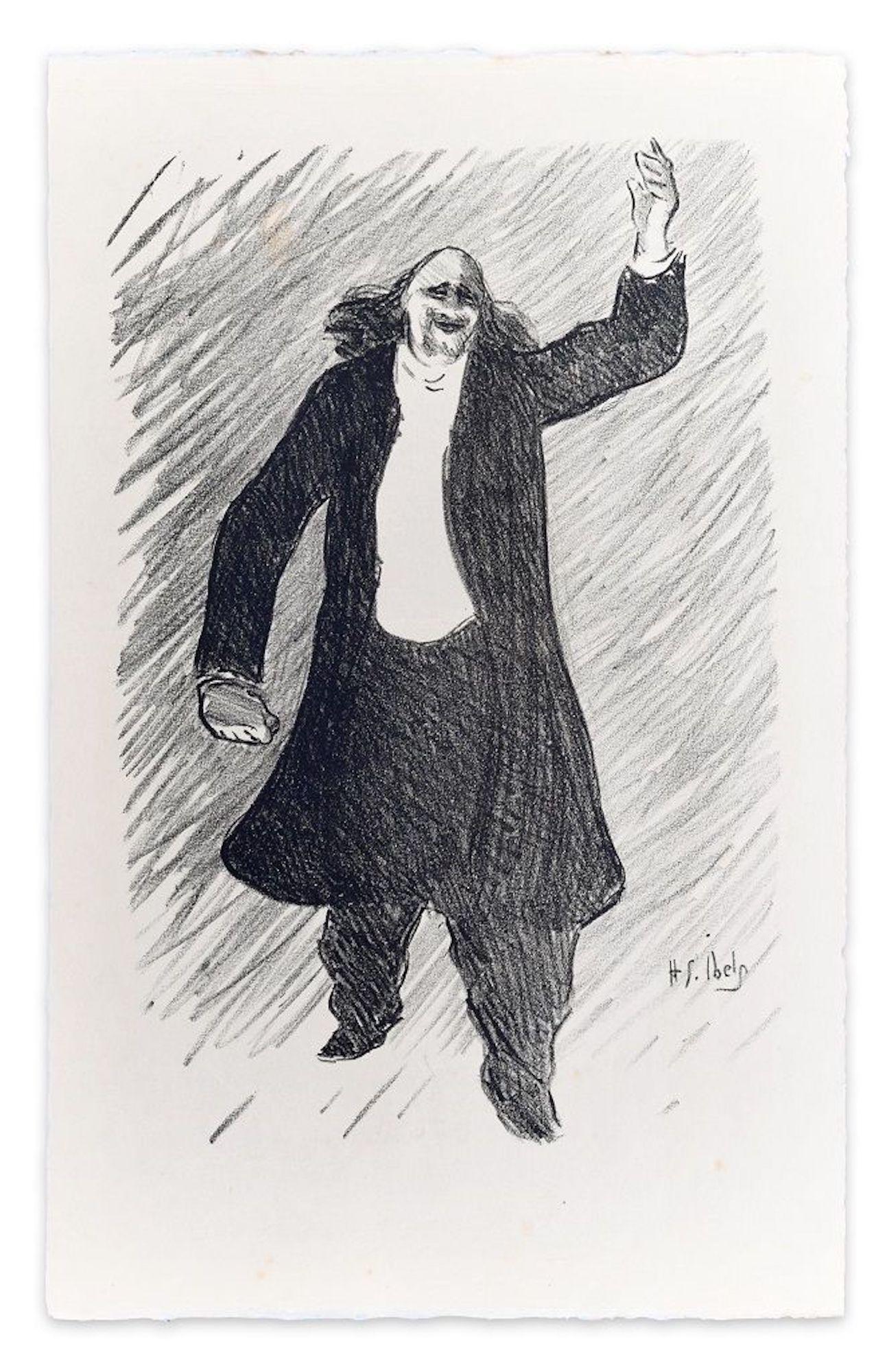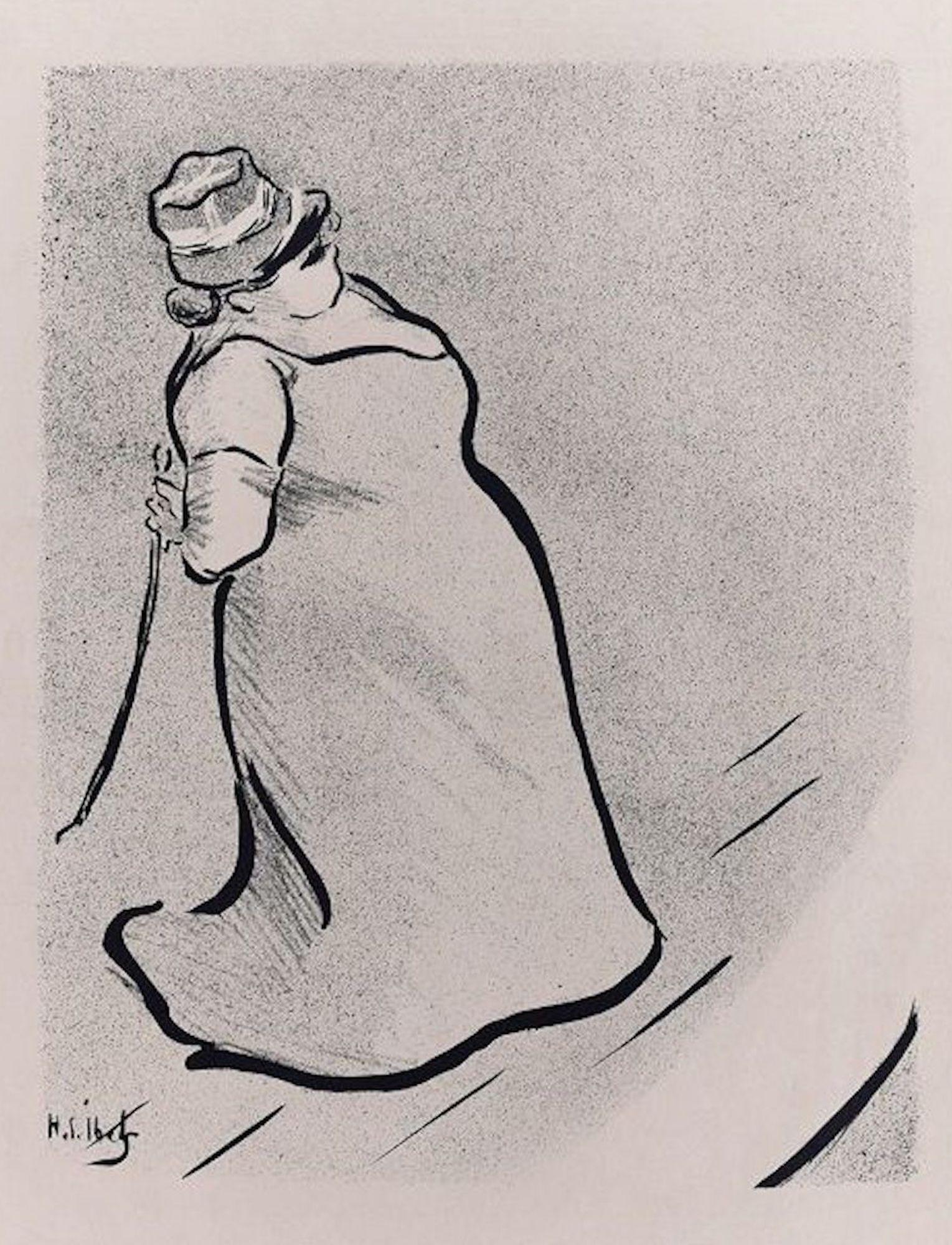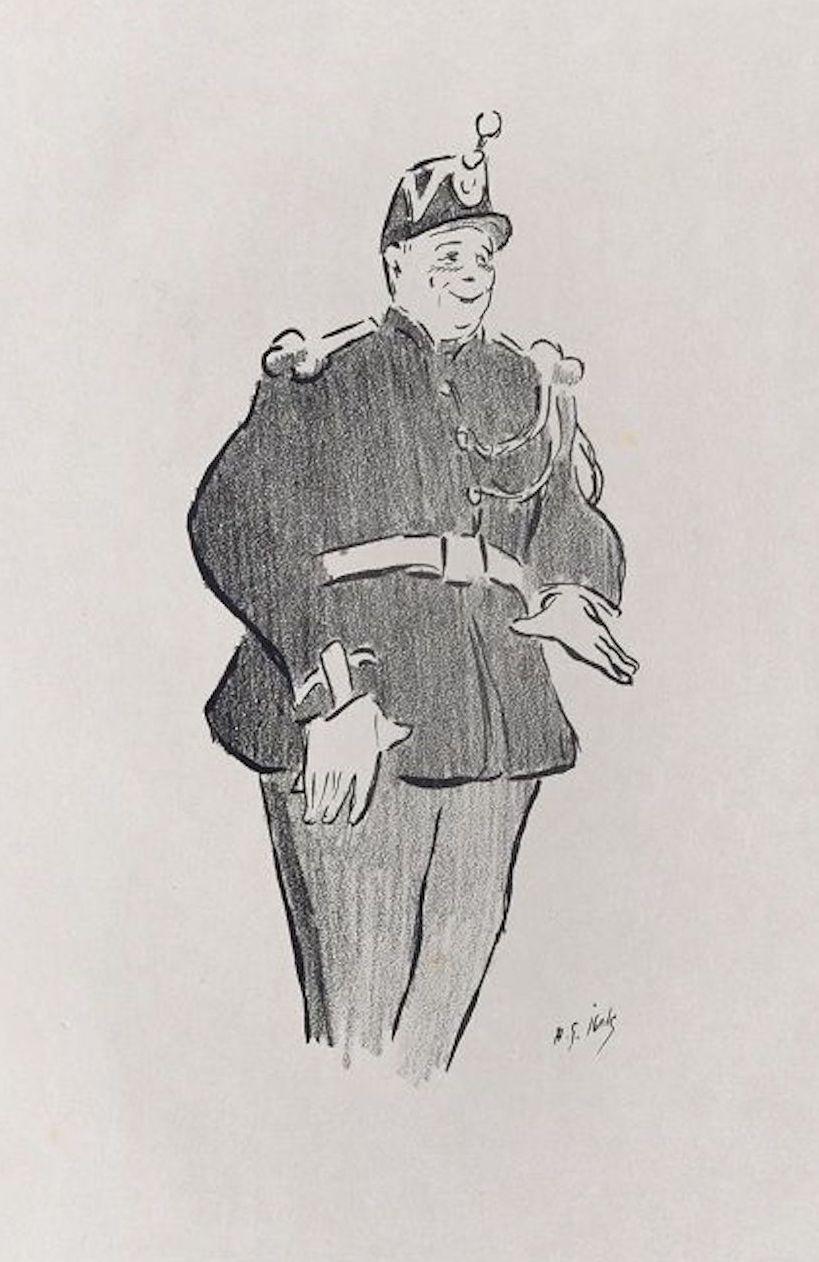Items Similar to Joies de Bretagne
Want more images or videos?
Request additional images or videos from the seller
1 of 11
(after) Paul GauguinJoies de Bretagnec. 1900
c. 1900
About the Item
Paul Gauguin (1848-1903)
Joies de Bretagne (Kornfeld 7 B)
zincograph, 1889, on simili Japon paper, from the second edition of circa 50 impressions, published by Ambroise Vollard after 1900, with wide margins.
Image approx. 8 x 9.5 inches
Framed approx 16.75 x 18.5 inches
- Creator:(after) Paul Gauguin (1848 - 1903, French)
- Creation Year:c. 1900
- Dimensions:Height: 16.75 in (42.55 cm)Width: 18.5 in (46.99 cm)
- Medium:
- Movement & Style:
- Period:
- Condition:
- Gallery Location:Missouri, MO
- Reference Number:1stDibs: LU74733365123
About the Seller
5.0
Vetted Seller
These experienced sellers undergo a comprehensive evaluation by our team of in-house experts.
Established in 1970
1stDibs seller since 2017
142 sales on 1stDibs
Typical response time: 20 hours
- ShippingRetrieving quote...Ships From: Missouri, MO
- Return PolicyA return for this item may be initiated within 2 days of delivery.
More From This SellerView All
- "Mlle Landsberg" (grade planche, pl. 16)By Henri MatisseLocated in Missouri, MO"Mlle Landsberg" (grade planche, pl. 16), 1914 Henri Matisse (French, 1869-1954) Signed and Numbered Lower Right Edition 12/15 Image size: 7 7/8 x 4 5/16 inches Sheet size: 17 11/16 x 12 1/2 inches With frame: 19 1/2 x 14 1/2 inches Henri Matisse came from a family who were of Flemish origin and lived near the Belgian border. At eight o'clock on the evening of December 31, 1869, he was born in his grandparents' home in the town of Le Cateau in the cheerless far north of France. His father was a self-made seed merchant who was a mixture of determination and tightly coiled tension. Henri had no clear idea of what he wanted to do with his life. He was a twenty-year-old law clerk convalescing from appendicitis when he first began to paint, using a box of colors given to him by his mother. Little more than a year later, in 1890, he had abandoned law and was studying art in Paris. The classes consisted of drawing from plaster casts and nude models and of copying paintings in the Louvre. He soon rebelled against the school's conservative atmosphere; he replaced the dark tones of his earliest works with brighter colors that reflected his awareness of Impressionism. Matisse was also a violinist; he took an odd pride in the notion that if his painting eye failed, he could support his family by fiddling on the streets of Paris. Henri found a girlfriend while studying art, and he fathered a daughter, Marguerite, by her in 1894. In 1898 he married another woman, Amelie Parayre. She adopted the beloved Marguerite; they eventually had two sons, Jean, a sculptor and Pierre who became an eminent art dealer. Relations between Matisse and his wife were often strained. He often dallied with other women, and they finally separated in 1939 over a model who had been hired as a companion for Mme. Matisse. She was Madame Lydia, and after Mme. Matisse left, she remained with Matisse until he died. Matisse spent the summer of 1905 working with Andre Derain in the small Mediterranean seaport of Collioure. They began using bright and dissonant colors. When they and their colleagues exhibited together, they caused a sensation. The critics and the public considered their paintings to be so crude and so roughly crafted that the group became known as Les Fauves (the wild beasts). By 1907, Matisse moved on from the concerns of Fauvism and turned his attention to studies of the human figure. He had begun to sculpt a few years earlier. In 1910, when he saw an exhibition of Islamic art, he was fascinated with the multiple patterned areas and adapted the decorative universe of the miniatures to his interiors. As a continuation of his interest in the "exotic", Matisse made extended trips to Morocco in 1912 and 1913. At the end of 1917, Matisse moved to Nice; he would spend part of each year there for the remainder of his life. A meticulous dandy, he wore a light tweed jacket amd a tie when he painted. He never used a palette, but instead squeezed his colors on to plain white kitchen dishes...Category
1910s Fauvist Figurative Prints
MaterialsEtching, Drypoint
- Zero Horizontal (Zero I)By Peter MaxLocated in Missouri, MOPeter Max "Zero Horizontal" (Zero I) 1973 Color Lithograph Ed. 194/300 Signed and Numbered Framed Size: approx. 32 x 25 inches Print Size: approx 20 x 26 inches Peter Max is a multi-dimensional artist focused on contemporary events. When he left art school in the 1960s he began producing, "cosmic imagery . . . that caught on right away, and before you knew it, I got an eight-page cover story in Life magazine." He explores all media, including mass media as a "canvas" for his creative expression. His decorative designs are on a Boeing 777 Continental, Dale Earnhardt's #3 Millennium race car, U.S. postage stamps and 235 U.S. border murals. He created two 155-foot murals for the U.S. Pavilion at the Seville World's Fair in Spain, 12 postage stamps for the Earth Summit in Rio de Janeiro, Brazil, and a 600-foot stage mural for Woodstock 2. He has also painted for five U.S. presidents, as well as the Beatles, Aerosmith and the Rolling Stones. After September 11th, 2001 Peter Max began a project by finishing 356 portraits of the firefighters that were lost in the attack. His portraits were then given to the victims' families. In addition, from a special request from President George W. Bush, he recently created another 356 portraits for a firefighters' memorial. Peter Max has worked with oils, acrylics, water colors, finger paints, dyes, pastels, charcoal, pen, multi-colored pencils, etchings, engravings, animation cells...Category
1970s Pop Art Figurative Prints
MaterialsLithograph
- National Palace, Mexico City (Juarez and the Reform Laws)By (after) Diego RiveraLocated in Missouri, MO(after) Diego Rivera "National Palace, Mexico City (Juarez and the Reform Laws) 1933 from the portfolio "Frescoes of Diego Rivera" Published by the Museum of Modern Art, NY Hand-Signed by the Artist Diego Rivera was born on December 13, 1886 in the mountain town of Guanajuato in Mexico. His mother was an ardent Catholic and his father was a rich and aristocratic revolutionary fighter and an atheist. Little Diego decided in favor of atheism. He swore his family had to leave Guanajuato when he was six because of his diatribes against the Church. When he was eleven he attended the San Carlos Academy of Fine Arts; his real teacher was Jose Posada...Category
1930s Modern Figurative Prints
MaterialsLithograph
- National Palace Mexico City, Persecution of the Indian, Revolution, IndependenceBy (after) Diego RiveraLocated in Missouri, MO(after) Diego Rivera "National Palace Mexico City, Central Stairway" (Persecution of the Indian, Revolution, Independence) 1933 from the portfolio "Frescoes of Diego Rivera" Published by the Museum of Modern Art, NY Hand-Signed by the Artist Diego Rivera was born on December 13, 1886 in the mountain town of Guanajuato in Mexico. His mother was an ardent Catholic and his father was a rich and aristocratic revolutionary fighter and an atheist. Little Diego decided in favor of atheism. He swore his family had to leave Guanajuato when he was six because of his diatribes against the Church. When he was eleven he attended the San Carlos Academy of Fine Arts; his real teacher was Jose Posada...Category
1930s Realist Figurative Prints
MaterialsLithograph
- Bareback Act, Old HippodromeBy Gifford BealLocated in Missouri, MOGifford Beal (1879-1956) "Bareback Act, Old Hippodome" 1950 Lithograph Signed Lower Right With original Associated American Artists label verso image: 6 3/8 x 9 5/8 in. (16.2 x 24.6 cm) sheet: 12 x 16 in. (30.4 x 40.6 cm) framed: 17 x 20 in. Gifford Beal, painter, etcher, muralist, and teacher, was born in New York City in 1879. The son of landscape painter William Reynolds Beal, Gifford Beal began studying at William Merritt Chase's Shinnecock School of Art (the first established school of plein air painting in America) at the age of thirteen, when he accompanied his older brother, Reynolds, to summer classes. He remained a pupil of Chase's for ten years also studying with him in New York City at the artist's private studio in the Tenth Street Studio Building. Later at his father's behest, he attended Princeton University from 1896 to 1900 while still continuing his lessons with Chase. Upon graduation from Princeton he took classes at the Art Students' League, studying with impressionist landscape painter Henry Ward Ranger and Boston academic painter Frank Vincent DuMond. He ended up as President of the Art Students League for fourteen years, "a distinction unsurpassed by any other artist." His student days were spent entirely in this country. "Given the opportunity to visit Paris en route to England in 1908, he chose to avoid it" he stated, "I didn't trust myself with the delightful life in ParisIt all sounded so fascinating and easy and loose." His subjects were predominately American, and it has been said stylistically "his art is completely American." Gifford achieved early recognition in the New York Art World. He became an associate member of the National Academy of Design in 1908 and was elected to full status of academician in 1914. He was known for garden parties, circuses, landscapes, streets, coasts, flowers and marines. This diversity in subject matter created "no typical or characteristic style to his work." Beal's style was highly influenced by Chase and Childe Hassam, a long time friend of the Beal family who used to travel "about the countryside with Beal in a car sketching...Category
1950s American Realist Figurative Prints
MaterialsLithograph
- Chapel of the Agricultural School, Chapingo (Ceiling Detail, Workers)By (after) Diego RiveraLocated in Missouri, MO(after) Diego Rivera "Chapel of the Agricultural School, Chapingo" (Ceiling Detail, Workers) 1933 from the portfolio "Frescoes of Diego Rivera" Published by the Museum of Modern Art, NY Size with the Matt: 18.5 x 13.5 inches Hand-Signed by the Artist Diego Rivera was born on December 13, 1886 in the mountain town of Guanajuato in Mexico. His mother was an ardent Catholic and his father was a rich and aristocratic revolutionary fighter and an atheist. Little Diego decided in favor of atheism. He swore his family had to leave Guanajuato when he was six because of his diatribes against the Church. When he was eleven he attended the San Carlos Academy of Fine Arts; his real teacher was Jose Posada...Category
1930s Modern Figurative Prints
MaterialsLithograph
You May Also Like
- The Ride - French Artist - Original Hand Signed and dated Lithograph - SymbolismBy Marc ChagallLocated in London, GBMARC CHAGALL 1887-1985 [Shagal, Mark, Zakharovich, Moses] Vitebsk, Belarus 1887-1985 Saint-Paul-de-Vence (Russian/French) Title: The Ride Le Chevaucheé, 1970 Technique: Original ...Category
1970s Fauvist Figurative Prints
MaterialsLithograph
- Mévisto - Original Lithograph on Japan Paper by H.-G. Ibels - 1893Located in Roma, ITMévisto - From Le Café Concert is an original print, realized in 1893 by Henri-Gabriel Ibels. Black and white lithograph on paper. Good conditions except for some ripple along th...Category
1890s Fauvist Figurative Prints
MaterialsLithograph
- Marcel Legay - Original Lithograph on Japan Paper by H.-G. Ibels - 1893Located in Roma, ITMarcel Legay - From Le Café Concert is an original print, realized in 1893 by Henri-Gabriel Ibels. Black and white lithograph on paper. Good conditions except for some ripple alo...Category
1890s Fauvist Figurative Prints
MaterialsLithograph
- Anna Thibaud - Original Lithograph on Japan Paper by H.-G. Ibels - 1893Located in Roma, ITAnna Thibaud - From Le Café Concert is an original print, realized in 1893 by Henri-Gabriel Ibels. Black and white lithograph on paper. Good conditions except for some ripples an...Category
1890s Fauvist Figurative Prints
MaterialsLithograph
- Jeanne Bloch - Original Lithograph on Japan Paper by H.-G. Ibels - 1893Located in Roma, ITJeanne Bloch - From Le Café Concert is an original print, realized in 1893 by Henri-Gabriel Ibels. Black and white lithograph on paper. Good conditions except for some ripple alo...Category
1890s Fauvist Figurative Prints
MaterialsLithograph
- Polin - Original Lithograph on Japan Paper by H.-G. Ibels - 1893Located in Roma, ITPolin - From Le Café Concert is an original print, realized in 1893 by Henri-Gabriel Ibels. Black and white lithograph on paper. Good conditions except for some ripple along the ...Category
1890s Fauvist Figurative Prints
MaterialsLithograph
Recently Viewed
View AllMore Ways To Browse
Vintage Black Cat Drawing
Weimar Republic
Artist With Last Name Andre
Ballet Dancers Lithograph
Cat Hat
Chagall David Etching
Cut Paper Art 19th
Henri Matisse Hand Signed Lithograph
Miro Book Print Lithograph
Original Erte Art
Pann Abel
Pas De Deux
Robert Moses
School Clock Vintage
Toulouse Lautrec Woman
Vintage 1930s Jazz
Vintage Love Letter Paper
Vintage Nun
